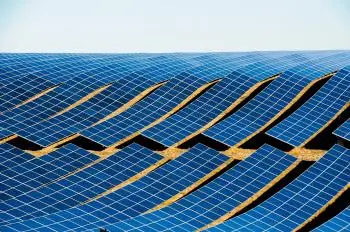
Solar energy is a form of renewable energy obtained directly or indirectly from the sun. Solar radiation leaves the Sun and travels through the solar system until it reaches Earth under electromagnetic radiation.
When we mention the different types of solar energy, we refer to the different ways we have to transform this energy. The main objective of all these strategies is to obtain electricity or thermal energy.
The main types of solar energy used today are:
-
Photovoltaic Solar Energy
-
Thermal solar energy
-
Concentrated solar power
-
Passive solar energy
Photovoltaic solar energy
Photovoltaic solar energy is produced through solar cells, which convert sunlight into electricity. These cells are made of semiconductor materials such as silicon and are commonly used in solar panels.
Photovoltaic solar panels can be installed on building roofs, on the ground, or in other places where they receive adequate sunlight.
Thermal solar energy
Solar thermal energy is used to heat water or air. Solar collectors capture the sun's energy and heat a fluid used to heat water or air. Solar thermal energy systems can be at low or high temperatures.
Low-temperature systems are used to heat water for domestic use, while high-temperature systems are used to generate electricity.
Concentrated solar power
Concentrated solar power is a type of high-temperature solar thermal power. Its operation is based on using mirrors or lenses to focus sunlight on a focal point. The heat generated at the focal point is used to generate electricity or to heat a fluid.
Concentrated solar power systems are more efficient than photovoltaic systems in converting solar energy into electricity, but they are more expensive and require more intensive maintenance.
Passive solar energy
Passive solar energy refers to building design that harnesses sunlight and heat to reduce the need for artificial power for lighting and heating. The orientation of the buildings, the size and location of the windows, and the use of suitable materials are critical factors in the design of buildings with passive solar energy.
Some examples of passive solar energy strategies are:
-
Orientation of the building: In the northern hemisphere, it is recommended to orient windows and living areas to the south to take advantage of direct sunlight during the winter and to the north during the summer to avoid overheating.
-
Natural ventilation: Windows and doors can be designed to create natural drafts that help keep fresh air circulating inside the building.
-
Insulation: Good insulation can reduce the need for heating and cooling systems, reducing the amount of energy consumed.
-
Building materials: Materials with high thermal capacity, such as stone or concrete, can absorb and store solar heat during the day and release it at night to keep the building warm.
-
Green roofs and walls: Plants absorb part of the sun's energy to carry out photosynthesis, which helps keep the building cool and improves air quality.
Hybrid solar power
Hybrid solar power combines solar technologies with other energy technologies, such as wind or hydroelectric power. Hybrid solar power systems are more efficient than standalone solar systems and can provide consistent power even without sunlight.
The following are the most common combinations of hybrid solar energy technologies:
-
Solar and wind power: Hybrid solar-wind systems can use wind turbines and solar panels to generate electricity. In this way, the wind turbines can continue to generate energy during the night or on cloudy days.
-
Solar and Biomass: Hybrid solar and biomass systems can use solar panels and a biomass heating system to generate electricity.
-
Solar energy and diesel generators: In this case, diesel generators are a non-renewable energy source but act as a backup when the solar panels do not receive solar radiation.
-
Solar power and hydropower: Solar power can be used during the day, and hydropower can be used at night or on cloudy days. If there is a surplus of energy during the day, the electricity can be used to pump water up and be used later to drive the turbines.


